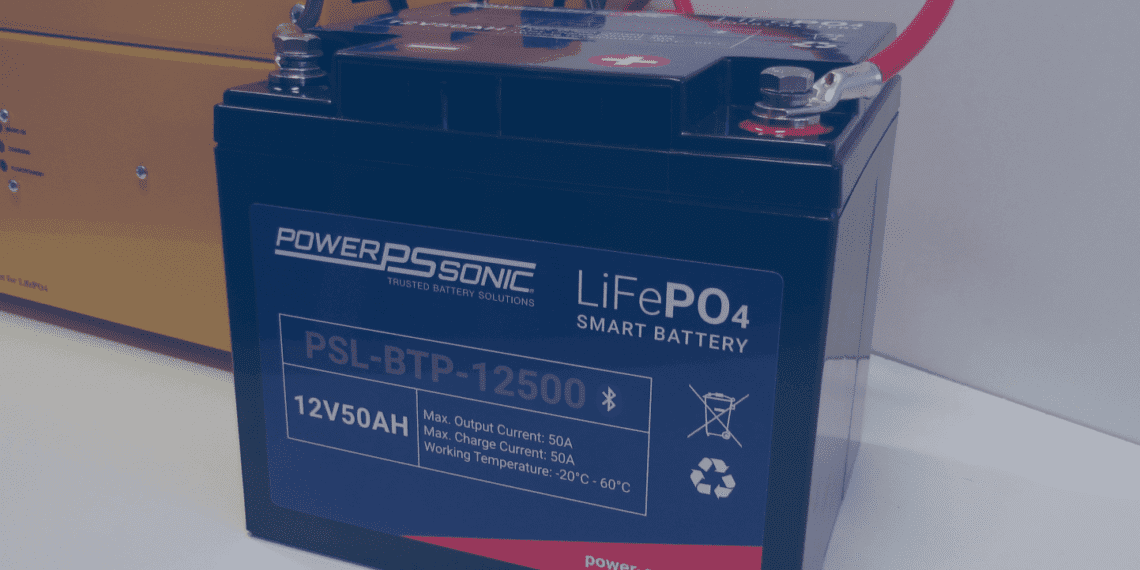LiFePO4 batteries have high performance and a lifetime of over 2000 cycles. But for their stable and durable operation, it is important to follow the rules of operation, including the need to properly charge LiFePO4 batteries. To do this, special LiFePo4 chargers are used. These chargers use the Constant Current (CC) / Constant Voltage (CV) algorithm.
At stage 1, charging occurs at a constant current, and an increase in voltage is observed. When its value reaches the set maximum – 3.6 or 3.65 V per cell, the voltage remains unchanged, and the charge current decreases to a minimum. At this stage, the final set of capacity occurs – the remaining 5–10% of the charge. This principle of recharging provides a full replenishment of the capacity reserve without the risk of overcharging the cells.
Table of Contents
When, What And How To Charge LiFePO4 Batteries
1. When?
LiFePo4 batteries can be recharged even if they are not fully discharged. They do not have a pronounced memory effect, therefore they allow partial replenishment of the charge and recharging at any discharge level – at least 50%, at least 20%. Therefore, it is highly recommended to charge battery when the level is below 50%. But this is optional. The main thing is to prevent deep discharge of batteries and their storage in this state. If the battery level is extremely low, you must not wait it to fully discharge and immediately recharge it. It is sufficient to charge the LiFePO4 cells halfway before storage. This will help reduce the natural decrease in battery capacity during storage.
2. How?
At temperatures above 0 and up to +40 °C, charging currents up to 10C. This is the permissible maximum in the question of how much current to charge LiFePO4 batteries. But if fast charging is not required, it is better to use smaller charging currents – from 1C to 5C. A BMS control system is needed to protect your battery from overheating and overcharging. In addition to it, the sensor in the charger can perform protection functions. To avoid overheating, do not cover the battery or charger while charging.
3. What?
Best of all – “smart” chargers. Required – suitable for LiFePO4 batteries, with a cutoff voltage of 3.65 V per cell. Before charging lithium-iron-phosphate batteries, such devices determine their current state with short voltage pulses and initiate the start of the recharging process from the desired stage.
Charging Sequence
Li-ion batteries in general and LiFePO4 in particular should be charged at room temperature. Recharging at sub-zero temperatures is unacceptable. After staying in the cold, the battery must be kept in the room for at least an hour so that it warms up. A dead battery should not be left uncharged for a long time. Otherwise, irreversible processes will begin to occur in it, which will lead to a drop in capacity and a reduction in resource.
The step by step process of charging LFP batteries is as follows:
- Insert the connector of the charger into the battery slot provided for it.
- Connect the charger to a 220 V network.
- Periodically observe the charge indicator – at first the red light will be on, and after the end of the recharging process – green.
- You can disconnect the battery or leave it to charge for another 5-8 hours to balance the cells. It is recommended to carry out it at intervals of 2-4 charges, but not more than once a month.
- To turn off – unplug the charger from the socket, and then disconnect its connector from the battery.
Conclusions
In order for lithium-iron-phosphate batteries to serve for a long time and properly, you need to take care of their correct charging. Although batteries of this type are more resistant to harsh operating conditions, you should not neglect the recommendations of LiFePo4 battery manufacturer. It is necessary to charge such batteries with chargers designed for them at room temperature, with currents from 1C to 5C (in extreme cases, up to 10C), preferably to the full level.
Incomplete charges for lithium batteries are not terrible, but if possible it is better to bring the charging process to the end so as not to contribute to a drop in battery capacity. The maximum voltage when charging LiFePO4 batteries should be 3.6-3.65 V per cell. This voltage corresponds to 100% charge level.

